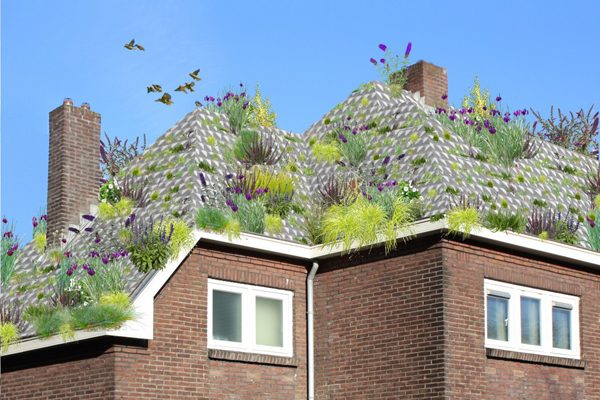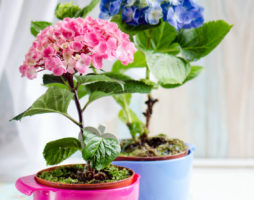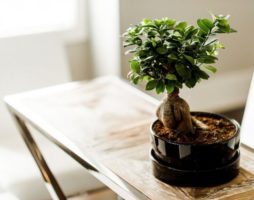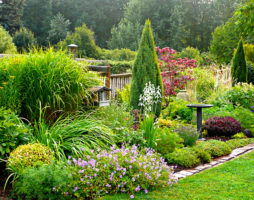Boer believes that vegetation is an important part of the city and the roof space is ideal for this. To create green rooftop gardens, the designer created tiles with the addition of funnels to fill with soil, which perfectly holds the roots of plantings.

Rooftop gardens and greenery are not new, but Rule de Boer has taken a different approach to creating them.
Modern flat roofs are easily covered with grass and potted plants, but sloping roofs are difficult to turn into green spaces. In such cases, his shingles fit perfectly. The funnels are attached to the roof surface and point downward so that the soil and plants remain intact.

These tiles also collect and store rainwater, so less watering is required overall. In addition, there are other benefits that are often found when planting roof gardens - soundproofing.

The garden has the potential to attract wildlife to cities and therefore enhance the natural environment in urban environments. Cleaner air is also a big plus for big cities.

This great, environmentally friendly concept comes with a few downsides. Of course, maintaining such roof gardens can seem daunting. It is problematic to plant new plants, add fertilizer, and, finally, water the garden. This issue is more or less solved in places with a rainy climate, but in hot regions, garden plants must either be drought-resistant or, for their watering, a certain convenient system is required. Landscaping and plant nutrition can be carried out using a conventional ladder. However, the question arises: how many funnels can be reached from the stairs?
Still, such tiles can be of great help to those who want to have a roof garden, but do not know how to approach its creation. Your opinion?











